Part 20 : Color Video Camera S-100
VF Team
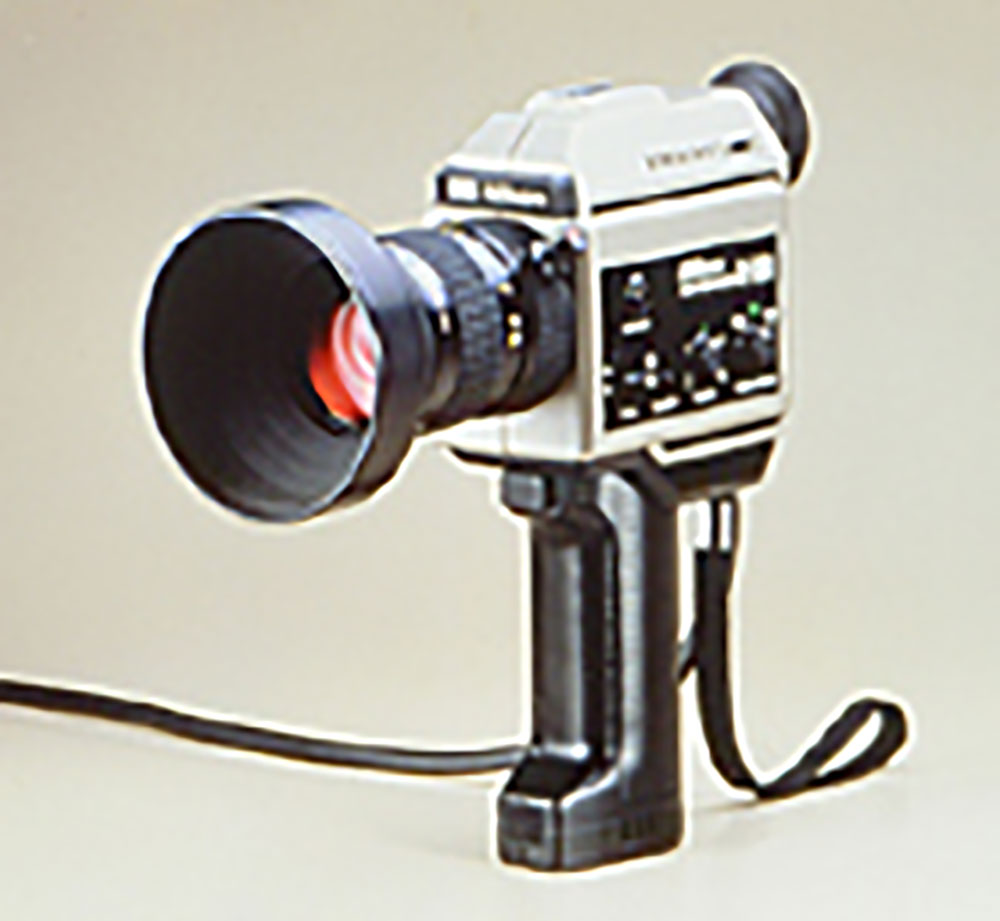
It was in 1977 just before Nikon was giving up its 8 mm movie camera (cine camera) business that "VF Team" was organized in the headquarters of Nippon Kogaku K.K. in Marunouchi, Tokyo. "VF" means "Video Feasibility". In short, it's a team to investigate the business feasibility of home-use video camera that had been rapidly developing at that time.
For the home-use 1/2 in. video tape recorder, two standards, "VHS" and "Beta-max" had been established, and both were rapidly spreading for simultaneous recording of a TV program of another channel. If a camera is combined with it, the similar function of a movie camera may be obtained. At that time, it couldn't be substituted with a movie camera due to its size and price, but a trend of the home-use video is a matter of vital importance for the movie camera business of Nippon Kogaku.
This team studied various aspect of video, including the future of video technology, if Nippon Kogaku should take part in the video market for a home-use movie camera, if yes, what are processes to take, and so on over the period of one year.
Scouting talents
After the study, VF team concluded that Nippon Kogaku should proceed the video business, and reported that to the top management. Then, the project team for development was organized and actual development was to be started. But the problem was talents. In line with the electronization of camera, electronics engineers were increasing in Nippon Kogaku and know-how in the newest electronics was accumulated in the company, but the video technologies could not be dealt with by own technology and know-how. It was required to scout the necessary talents from the outside.
Large-scale talent scouting unprecedented in the history of Nippon Kogaku started this way. First of all, the leader of the development. It was decided to invite a big figure from a certain electronic parts manufacturer through executive recruiters. On behind-the-scene-contacts of this leader and through the newspaper advertisement, quite a number of engineers joined the company from various sources and the team for the development of video camera system started.
Unique video camera
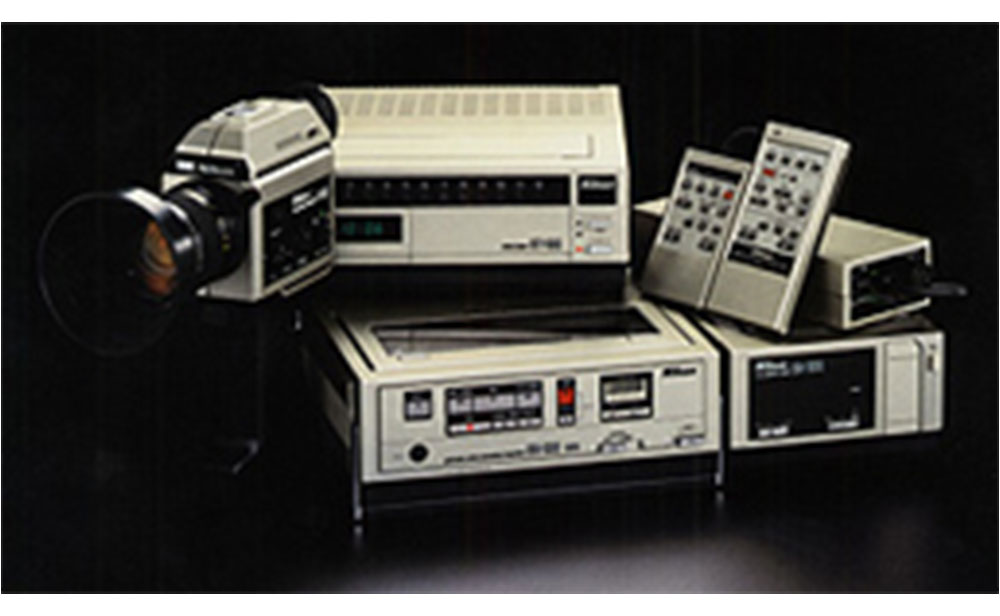
Portable Video Recorder SV-100,
Video Tuner ST-100 and
A.C. Power Unit SA-100
The development plan was forwarded by three separate teams,
- 1.Video camera,
- 2.Video deck and
- 3.Lens.
The lens was developed in consideration of supplying to the camera made by home-appliance makers, so-called OEM (Original Equipment Manufacturing) business, in addition to using it for own camera. However, this OEM business suffered from high cost problem and a maker accepting the lens wouldn't appear. Only a certain home-appliance maker accepted it to their camera and it was displayed at the shop window. It had come up in conversation that a large logo of "Nikon" was carried on the lens cap of that camera, but it was soon discontinued.
It was the video camera which we developed with the great effort. Having made the good use of the experience in 8 mm movie camera, a unique video camera was completed. It was released in June 1982, as "Color Video Camera S-100" (See Photo 1.) together with "Portable Video Recorder SV-100" and "Video Tuner ST-100".
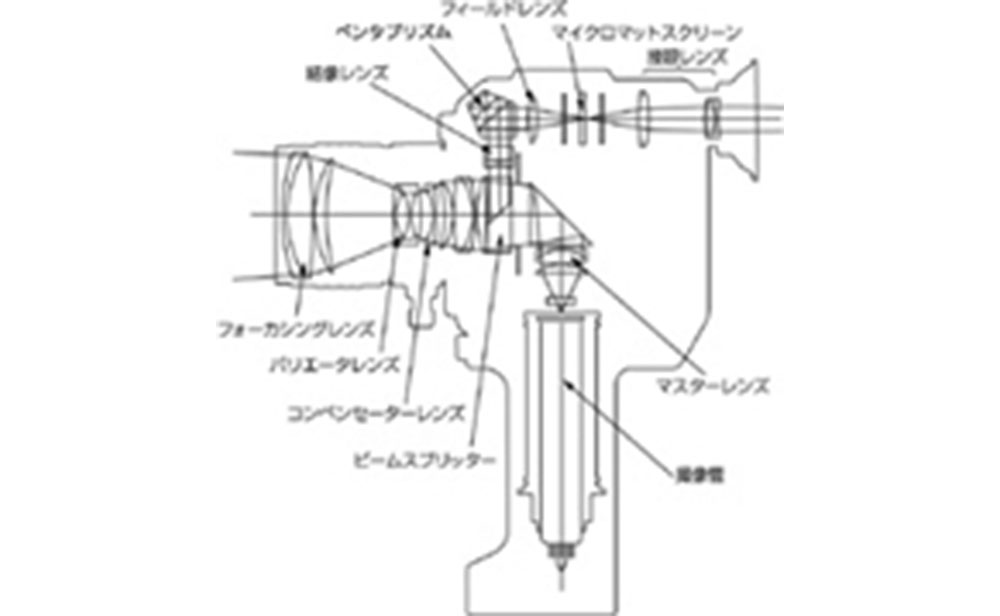
Optical system of S-100
Video camera system at that time was so-called a separate type which consists of separate camera and portable video deck, and the deck carried over the shoulder and the camera held by hand were connected by a cable. And the camera alone was much bigger and heavier than current solid type video camera. Moreover, "portable" belies its name, some of the early decks were 8~10 kg heavy, and when I see, in brochure, a woman model carrying it over her shoulder with a smile, I might have almost shouted, "it's a lie !".
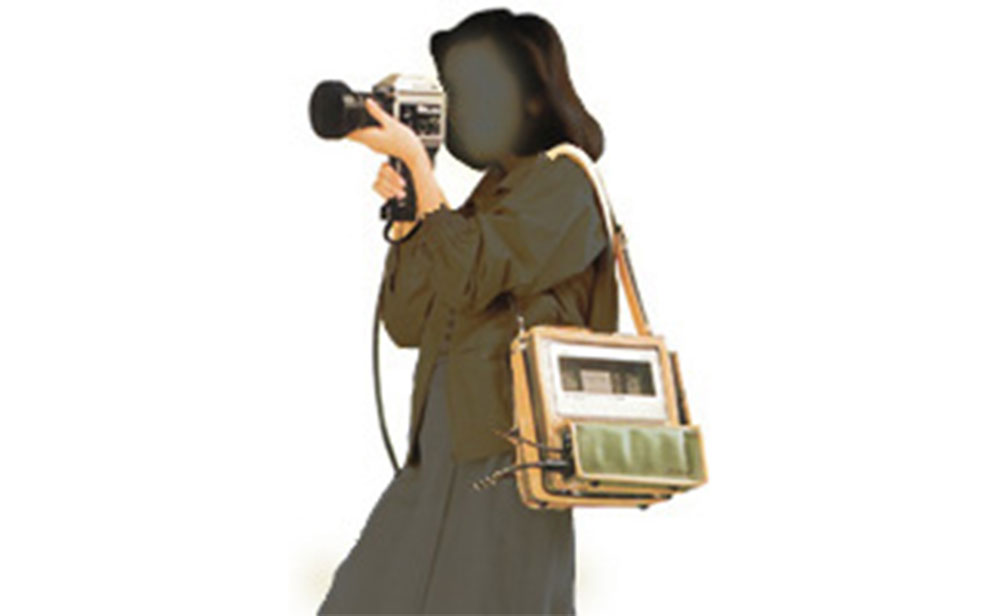
SV-100 (approx. 3.8 kg w/Battery Pack VN-1) and
CCU (approx. 550 g)
In such circumstances, it was an immediate requirement to attain a drastic down-sizing and light weight in order to spread video cameras to more homes. Especially, the camera must be made as small as possible, as it is held by hand, we adopted the optical system in which the pickup tube (solid-state imaging device like CCD was not practically acceptable at the time) was arranged vertically inside the hand grip and the light path from the taking lens was bent downward on its way and focused on the image plane of the tube (See Fig. 1).
CCU (Camera Control Unit) circuit was separated and was housed inside the Video Carrying Case FV-1 of the deck.
As the integration of IC was not very large at that time, quite different from today, CCU alone became quite a volume and weight, and it contributed very much to the down-sizing of a camera to separate this from the camera body.
Optical viewfinder and electronic viewfinder
Adopting an optical viewfinder was another feature of "Video Camera S-100". Most of home video cameras at that time were equipped with an electronic viewfinder using a small-size CRT, but it was rather bulky and only a low-definition monochromatic image cold be viewed. In addition, it consumed the power much.
For Nippon Kogaku that had been setting great value on an easy-to-view and accurate finder in the development of 8 mm movie cameras, it must have been intolerable to provide users with such a poor-viewing finder.
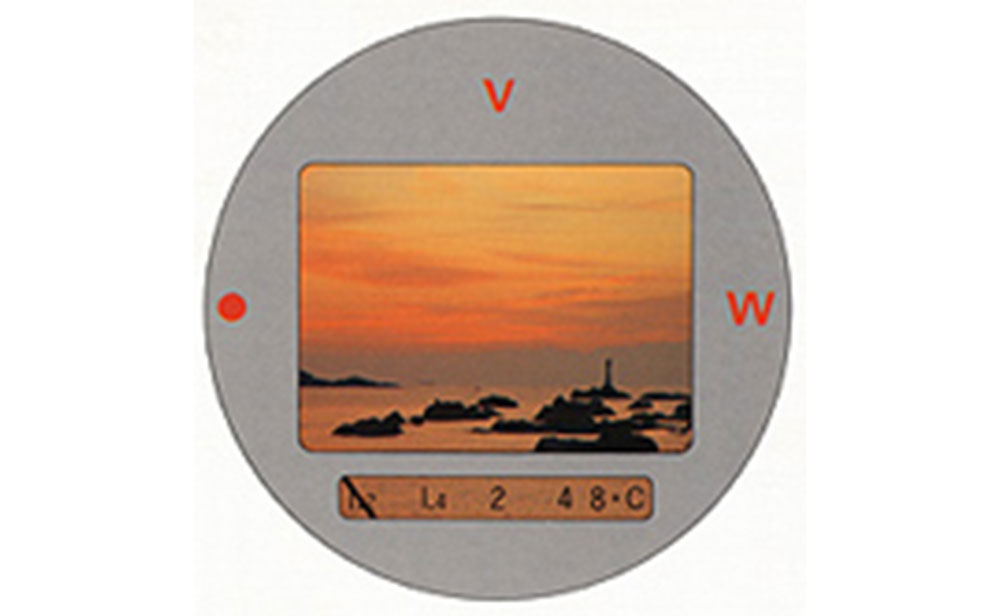
Anyway, "S-100" didn't adopt an electronic viewfinder but incorporated an optical SLR finder instead. Owing to a newly developed micro-mat focusing screen and a fast f/1.2 taking lens, the finder was very easy-to-view. I might have said that "it is characteristic of an optical maker", but the result was unfavorable. Most users chose the electronic viewfinder.
The function particular with the electronic viewfinder, that the optical finder lacks, is the function of the playback of the recorded image. Users preferred the convenience of that function, even though its image was poor and monochromatic.
Video deck
The camera was entirely developed by Nippon Kogaku itself, but the video deck was, from the beginning, to be supplied by some electric maker on OEM basis. It's meaningless to downsize the camera so much, although a bulky video deck of 8 to 10 kg was used. However, at that time when the "VHS" and "Beta-max" format VTR which use 1/2 in. (width) tape for recording TV programs just started to spread, the compact tape cassettes such as 8 mm video tape and digital video tape hadn't yet come out.
Only a standard of 1/4 in. tape cassette named "CVC" was proposed by some home-appliance maker, and the supply of a deck was also offered by the same maker. The 1/4 in. video cassette as small as the audio cassette and the deck was also surprisingly small. It seemed to be most suitable for a portable deck for a video camera. Nippon Kogaku had almost decided to adopt the deck of "CVC" standard, following many other camera makers that had already adopted it. That was reversed at the last moment, just before the release.
It was due to the appearance of "VHS-C". Its recording time was short 20 minutes, but the compatibility with the "VHS" standard that was widely used as a tabletop type was a strong weapon. The conclusion was obvious. The CVC deck was immediately changed to the VHS portable deck ("SV-100") and then, a little later, the VHS-C deck "SV-200" was added (October 1982), and the more compact system was attained.
Video camera was electric product
Nikon home video camera system developed in such a large scale didn't sell at all. It was one of the reasons that its adoption of an optical finder instead of an electronic viewfinder was not accepted by users as mentioned before, but video systems of other camera manufacturers which were released all at once at the same time were not accepted as well. All the models sold well were products of home-appliance manufacturers.
It was positioned by camera manufacturers as "the extension of home movie brought up by 8 mm movie camera", but users didn't think so and they regarded it as "a tool for recording affairs of home and around on the tape to record TV programs".
After all, the video camera was not the product of optical manufacturers but that of home-appliance manufacturers.
The "S-100" was the only model of video camera developed by Nippon Kogaku itself, and the development group was disorganized. However, talents invited and brought up at that time contributed to build a basis of the field of electronic imaging of Nikon, having formed the core group for developing such products as film scanners and digital cameras.
Note
This issue first appeared in Nikkor Club Quarterly magazine published by the Nikkor Club, and was revised for Nikon's website.
The names of companies and products are registered under said companies' trademark and copyrights.
Camera Chronicle
Archives of corporate history subject matter related to Nikon cameras, including rare materials, as well as product photos of cameras and lenses.
